方案详情文
智能文字提取功能测试中
VERSA SeriesApplications Educational Note # 1 Applications ofMagnetic Bead Technology with Versa Workstationin Genomics & Proteomics l. Introduction Magnetic separation technology, using magnetic particles, is a quick and easy methodfor the sensitive and reliable capture of specific proteins, genetic material and otherbiomolecules. Initially, the technology started with nano-sized iron oxide particlessuspended in carrier liquid called magnetic fluids or ferrofluids. Although referred to asmagnetic, many of the particles currently used are super-paramagnetic (can easily bemagnetised with an external magnetic field) and immediately redispersed once themagnet is removed (Figure 1). This way it leads to magnetically driven separationtechniques. keeping this versatile technology in view, Aurora Biomed Inc hasdeveloped a workstation that is adaptable to magnetic beads based protocols. Il. Formats of magnetic beads: The formats of particles that are currently available can be broadly classified as: 1. Unmodified or naked particles 2.. Magnetic microspheres/ nanospheres having chemically derived particles withgeneral specificity ligand attachments on the surfaces a. Silica beads b. Agarose beads c. Beads with immobilized carboxylic groups a. Beads with immobilized streptavidin b. Beads with immobilized Protein A c. Beads with immobilized lectins d. Beads with immobilized any other general ligand 3.. Chemically derived particles with specific recognition groups a. Beads with immobilized specific oligonucleotides for example poly dT b. Monoclonal and polyclonal antibodies c. Beads with immobilized any other specific ligand II. Advantages 1.The analyte is subjected to very little mechanical stress in comparison to othermethods. 2.These methods are non-laborious 3. Very cost-effective 4.. Reduced reagent costs 5. Highly scalable to smaller and bigger volumes 6. Provides high throughput 7. Faster operations than other methods 8. High-purity yield of biomolecules 9. Highly amenable to automation 10.Economical in terms of miniaturization thus saving costly reagents andbiomaterials Figure 1. A typical example of the paramagneticbeads (1um in diameter) IV. Applications The isolation of specific molecules based on their interaction with complementarybinding partners is emerging as an important technology in many fields of research.These magnetic separation techniques are leading to various applications in the filedof biotechnology, biomedicine and drug discovery. 1. Genomic applications In this post-genomic era, technologies based on magnetic separation arebecoming an integral part of the standard biology laboratory. a. High throughput nucleic acid isolations 1.DNA RNA isolations: Isolation of DNA is a prerequisite step for manymolecular biologytechniques.The separation of DNA from thecomplex mixtures; in which they are often found is sometimesnecessary before other studies and procedures such as sequencing,amplification, hybridization, detection, etc. The presence of largeamounts of cellular or other contaminating materials, such as proteinsor RNA, in such complex mixtures often impedes many of the reactionsand techniques used in molecular biology. The conventional protocolfor extracting DNA involves cell lysis followed by the removal of contaminating cellular components suchnasproteins, lipids andcarbohydrates and, finally, isolating DNA using a series of precipitationand centrifuge separation steps, which are difficult to automate.Improvements in methods for isolating DNA. The discovery in the late 1980s that silica can be used as adsorbentfor DNA isolation became the basis for most of the DNA isolation kitscurrently available. One of these kits involves the isolation of DNA,using silica-coated magnetic particles. A high-throughput genomeisolation protocol has been developed, based on solid-phase reversibleimmobilization (SPRI) chemistry. The SPRI protocol is based on thebinding of DNA to the surface of carboxyl-coated paramagneticparticles, under the conditions of a high presence of salt andpolyethylene glycol. Similarly, the magnetic bead procedures areadapted for RNA isolations. Figure 2: Showing a 96-ring magnet block onwhich a 96-well plate fits and the magneticbeads make a ring at the bottom of each wellthus leaving the centre for aspiration the liquidalong with unbound molecules ii. mRNA isolations: A number of methods have been reported for theisolation of total RNA from a variety of cells or tissues. In 1979, amethod was developed for the efficient isolation of total RNA byhomogenization in a 4mol solution of guanidium thiocyanate containing0.1mol of 2-mercaptoethanol. Homogenization is followed by theextraction of RNA by ethanol or by ultracentrifugation through caesiumchloride. This method was further modified in 1987 to devise a rapidsingle step isolation procedure for RNA. It involves the extraction ofRNA using a mixture of guanidium thiocyanate and phenol-chloroform.Many RNA isolation kits are available based on the above twoprotocols. All of these methods isolate RNA on the basis of its biochemical properties. In contrast, thebiomagnetic separation of messenger RNA (mRNA) is based on aspecific complementary hybridization between the poly A sequence ofisolated mRNA and the oligo (d T) sequence covalently linked to thesurface of paramagnetic particles. In this method, oligo (dT)-coatedmagnetic beads are added to crude cell or tissue lysate. Duringincubation, poly (A) mRNA from the lysate is caught onto the surface ofoligo (dT)-coated magnetic beads. The beads/mRNA complex is thenwashed magnetically. The mRNA thus isolated is either eluted ordirectly applied for many downstream applications, which include:complementarylDNA (cDNA)library construction;subtractivehybridization; Northern hybridisation; reverse transcription PCR; and invitro translation. poly dT magnetic beads b. DNA/RNA binding proteins:The isolation and characterisation ofspecific transcriptsor proteins canbe employed to monitor theprogression of disease. Several kits are available in the market that workon the principle of magnetic labeling and the direct isolation of biotinylatedmolecules such as [DNA, RNA or proteins onto streptavidin-coatedmagnetic beadsfor example pMACS streptavidin Microbeads (MiltenyiBiotec, Germany).These biotinylated molecules can then be used for theindirect isolation of non-biotinylated target molecules that may interact withthem. The procedure involvesi a complex formation betweenbiotinylated probe (DNA, RNA or proteins) and the target molecule (i.e.interacting biomolecules of DNA, RNA or protein). Based ontheinteraction of biotin and streptavidin, the probe-target complex is thenseparated from the rest of the component by the addition of streptavidin-coated magnetic beads. The complex is magnetically isolated and washedto remove non-specifically bound molecules. The non-biotinylated target moleculescan be eluted off from the complex with high purity, whereas themagnetically labelled, biotinylated probe remains bound to the column.This technique has the potential for rapid and efficient screening oftranscriptional and translational regulatory proteins. Target DNA-conjugated magnetic beads have also been used for the rapid screeningof DNA-binding peptide ligands from a solid-phase, combinatorial library. 2. Proteomics applications Protein isolation and manipulation is often achieved using resins and slurries ofmolecules as column- or liquid-based solid-phase supports. The conventionalchromatography columns are very slow to use, as most rely on gravitationalflow and, therefore, binding, washing and elution steps can take many hours tocomplete for even simple isolations. They also generate significant backgroundcontamination in downstream analysis due to non-specific binding andincomplete washing. On the other hand, centrifugation steps used duringagarose-based methods are time consuming and can generate greater sampleloss due to incomplete separation and hazy delineation of the fluid component. With these solid-phase supports being a hindrance in some downstreamanalyses, a cleaner and easier-to-use support based on magnetic micro-particles have proven their worth. Therefore, magnetic particles are nowincreasingly used as carriers for binding proteins, enzymes and drugs. Studieshave shown that proteins and enzymes can be covalently attached to nakedmagnetic particles in the presence of carbodiimide. Such immobilization(attachment) procedures for proteins, enzymes or drugs will have a majorimpact in various areas of medicine and biotechnology. The immobilisedbiomolecules can be used directly for a bioassay, or as affinity ligands tocapture or modify target molecules or cells. On this basis, nitriloacetic acid (Ni-NTA)-tagged magnetic agarose beads have been used for versatile magneto-capture assays using 6xHis-tagged proteins (the proteins which are expressedwith recombinant DNA technology as multi-histidine aminoacids attached to theprotein of interest. The multihistidine residues have affinity to Figure 4: Magnetic isolation ofrecombinant proteins Nickel and bind with it). The procedure involves the use of metal chelatingnitriloacetic acid groups covalently bound to the surface of agarose beads, which contain strong magnetic particles. The beads are pre-charged withnickel, which is ready to capture 6xHis-tagged proteins for sensitive-interactionassays or microscale purification of 6xHis tagged proteins (Figure 3). Thistechnique therefore bridges the gap between purification-scale proceduresusing Ni-NTA metal chelate affinity chromatography resins and microplate-based assays. 4.. Biomedical applications The magnetic bead technology is finding versatile applications in biomedicalfield where basic working principle is to hook and fish out the desired cell withexternal magnetic field. a. Cell isolation or rare cell detection:The cells isolations with thismethods have become very easy as the magnetic beads need to beattached with specific molecules that have specificity for a specificsurface molecule of the cell to be isolated (Figure 5). b. Bacterial isolations: Paramagnetic beads coated with Protein G andTosylactivated-280 dynabeads have also been used to purify Bacillusanthracis protective antigen from a liquid culture. The obtained proteinwas used in the ELISA to detect the bacterial protective antigenantibodies in human sera collected from immunized individuals. Thepurification method using paramagnetic beads was very effective. It isfast, easy and may be carried out practically in any laboratory. c..Magnetically guided drug targeting: It has been attempted in order toincrease the efficacy and reduce the unpleasant side effects associatedwith chemotherapy.. TThhiiss method of drug delivery involves ttheimmobilization of drug or radionuclide in biocompatible, magnetic nano-or microspheres. This method of delivery makes chemotherapy moreeffective by increasing the drug concentration at the tumor site, whilelimiting the systemic drug concentration. In such operations of mixing thedrug with magnetic particles and to recover unbound drug, roboticworkstation may play a part at the industrial scale. Figure 5: Magnetic isolation of cells 4.Drug discovery applications Now that the human genome is sequenced and about 30,000 genes areannotated, the next step is to identify the function of these individual genes,carrying out genotyping studies for allelic variation and single nucleotidepolymorphism (SNP) analysis, ultimately leading to the identification of noveldrug targets The modern drug discovery process emphasizes rapid datageneration and analysis, in order to identify promising new chemical entities aswell as new drug targets early in the development cycle. At every step of therapidly evolving drug discovery process, dozens of technologies and productsare required. But innovations in newer technologies for genomics andproteomics are changing the face of drug discovery. Automation has becomeessential in allowing researchers to meet the high-throughput demands oftoday's research environment. The most prominent area in which magneticseparation is applied in drug discovery is sample preparation, which includeshighthroughput genome isolation for sequencing and PCR amplification to carryout genotyping, SNP scoring and/or expression profiling. V. Versa Workstation As the above mentioned details on the protocols using magnetic bead involve thesteps of shaking the contents, washing, aspirations and dispensing, incubation (plateheating/cooling), reagent cooling etc. The Versa series of workstation are dedicated tocarry these operations providing all the necessary conditions. The the versa series areequipped as follows: a. One, two or three arms for liquid handling b. Plate transporter c. Accessories include: (1). Magnetic block (2). Plate shaker Plate Incubator (cooler/heater) Reagent / reservoir cooler . Vacuum manifold etc. Vl. References: 1. Sucholeiki I, Toledo-Sherman LM, Hosfield CM, Boutilier K, DeSouza LV,Stover DR. Novel magnetic supports for small molecule affinity capture ofproteins for use in proteomics. Pharmaceutical Discovery, Aug 1, 2005 : MolDivers. 2004;8(1):9-19 2.ZARZECKA A, BARTOSZCZE M: Application of Paramagnetic BeadsforPurifying Bacillus anthracis Protective Antigen. Journal of VeterinaryMedicine Series B 2006,53(8)393-398. Aurora Biomed Inc.East Pender Street, Vancouver BC Canada VBAWwww.aurorabiorPhone: Fax: email: into@aurorabiomed.com 磁分离技术是一种快速、简便、灵敏、可靠地捕获特定蛋白质、遗传物质和其他生物分子的方法。最初,该技术从悬浮在载体液体中的纳米氧化铁颗粒开始,称为磁性流体或铁磁流体。虽然被称为磁性,但目前使用的许多粒子都是超顺磁性的(很容易被外部磁场磁化),一旦磁铁被移除,就会立即重新分布。这样就产生了磁驱动分离技术。鉴于这一多功能技术,Aurora Biomed Inc.开发了一个适用于基于磁珠的工作站。
关闭-
1/7

-
2/7

还剩5页未读,是否继续阅读?
继续免费阅读全文产品配置单
加拿大欧罗拉生物科技有限公司为您提供《磁珠的应用》,该方案主要用于其他中DNA检测,参考标准《暂无》,《磁珠的应用》用到的仪器有96通道核酸提取仪 欧罗拉移液工作站 、测序前处理 欧罗拉NGS体系构建液体处理工作站、法医鉴定核酸提取 欧罗拉液体处理工作站、下代测序体系构建工作站 欧罗拉NGS样品制备。
我要纠错
相关方案



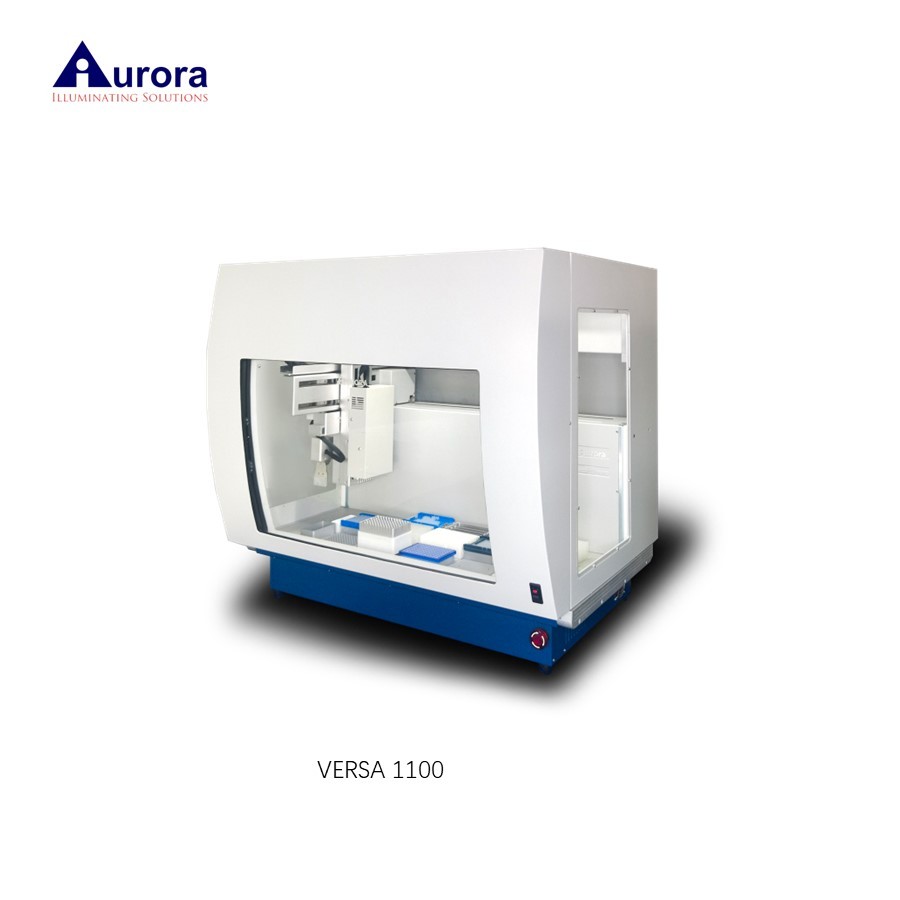

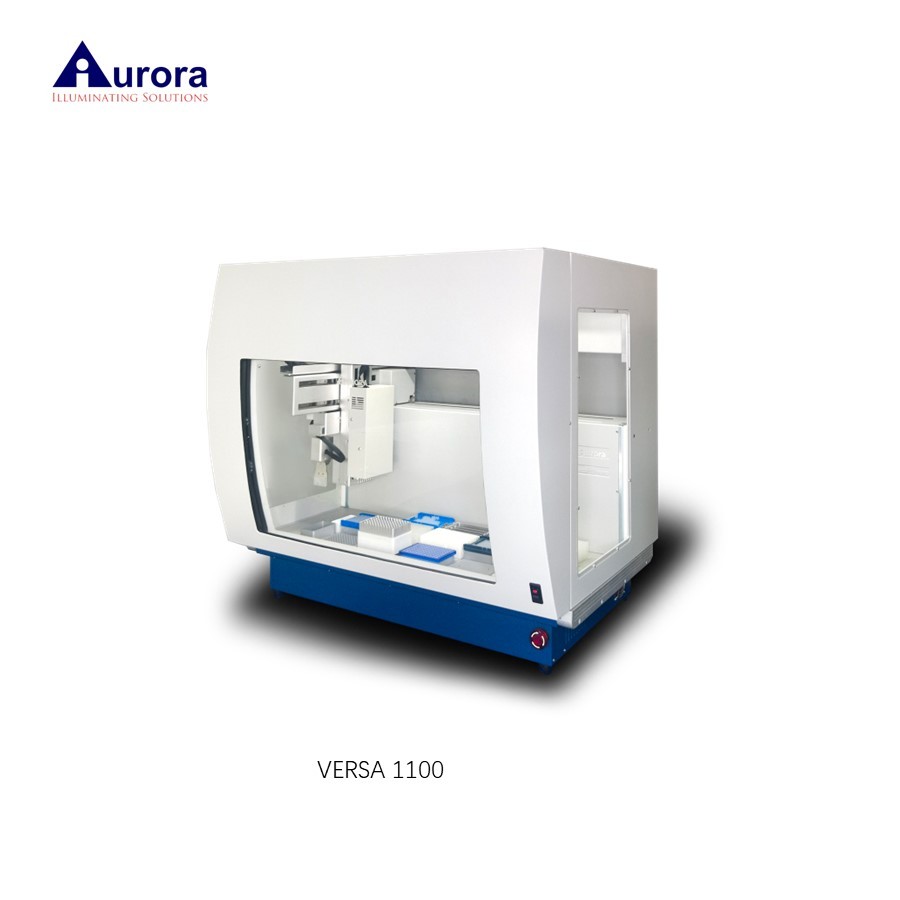
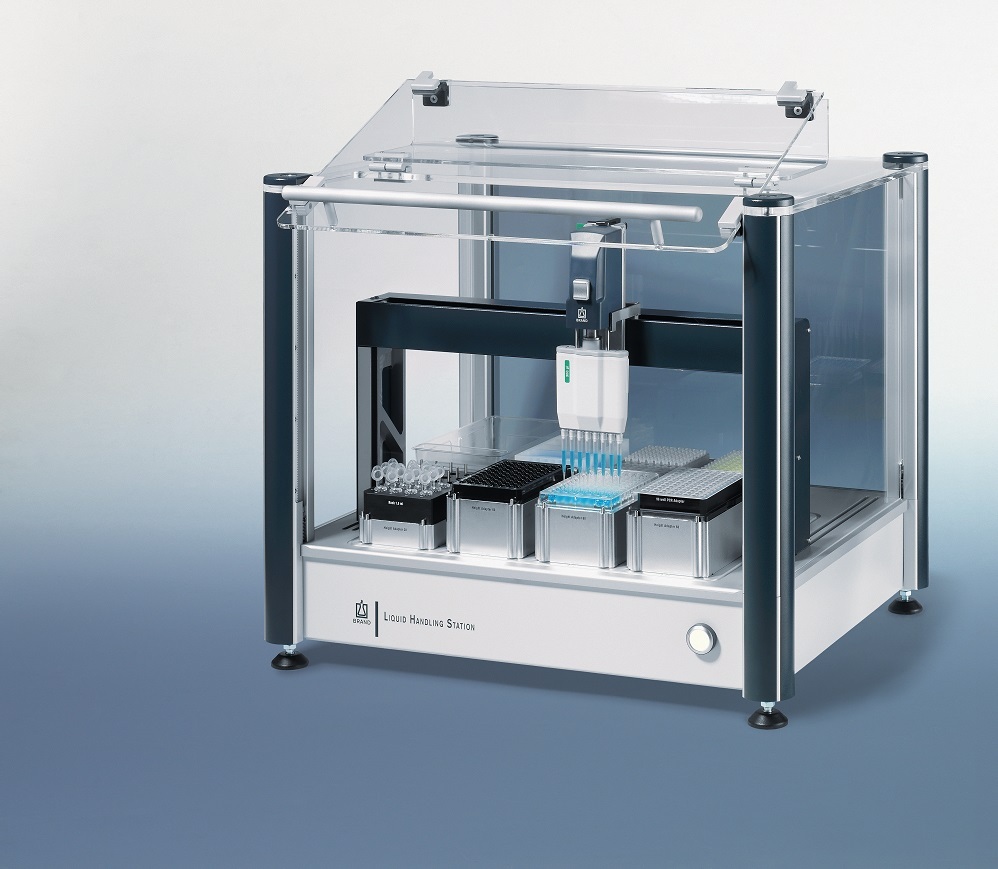
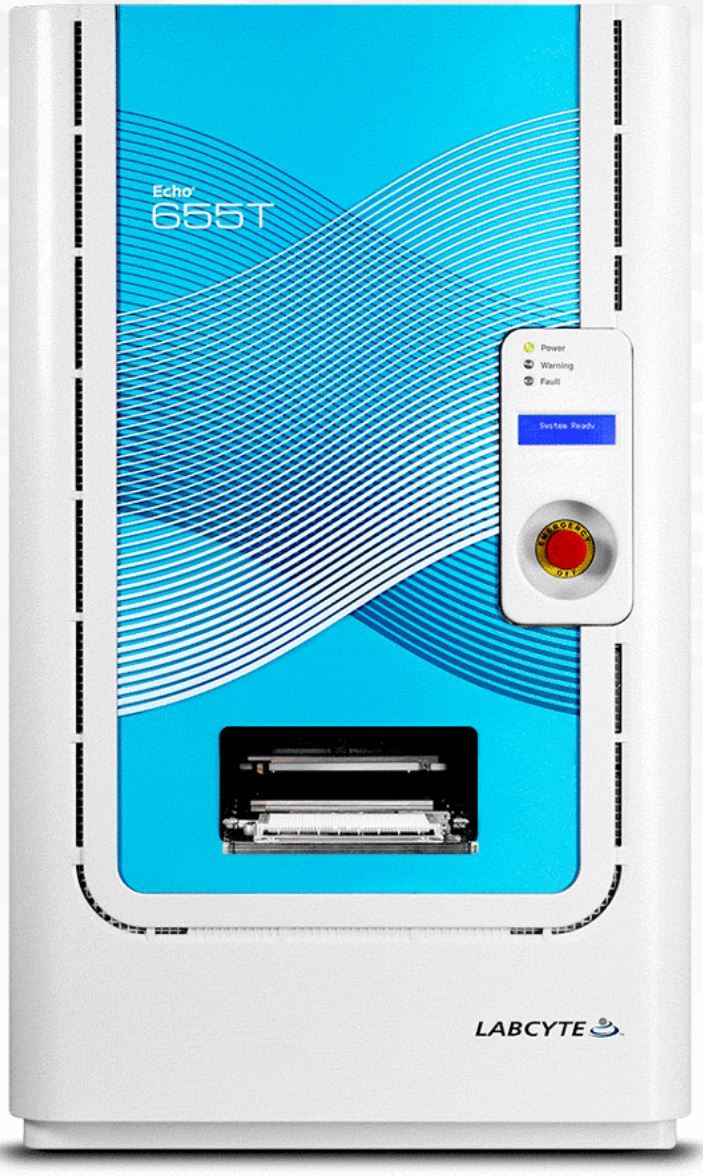
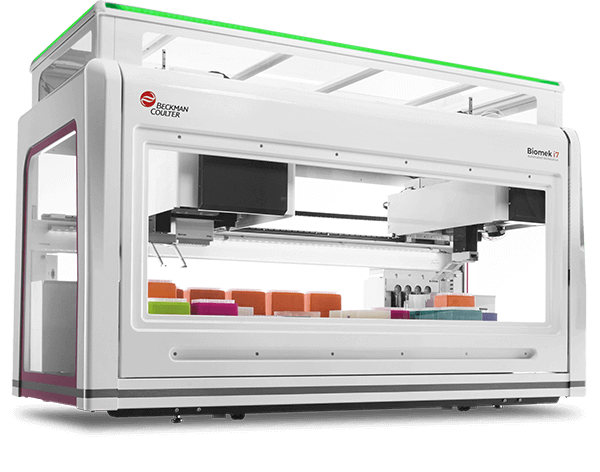
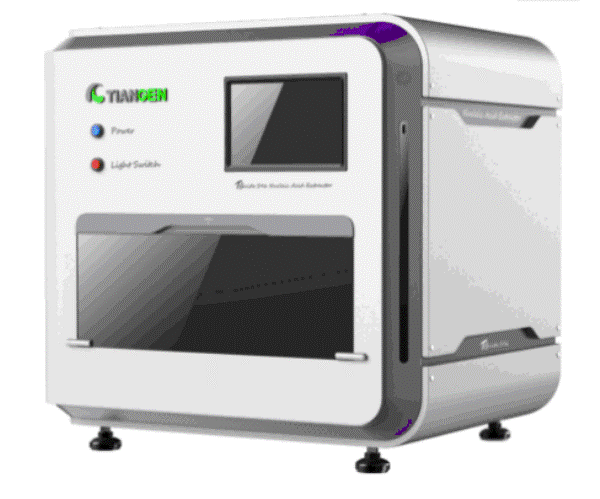
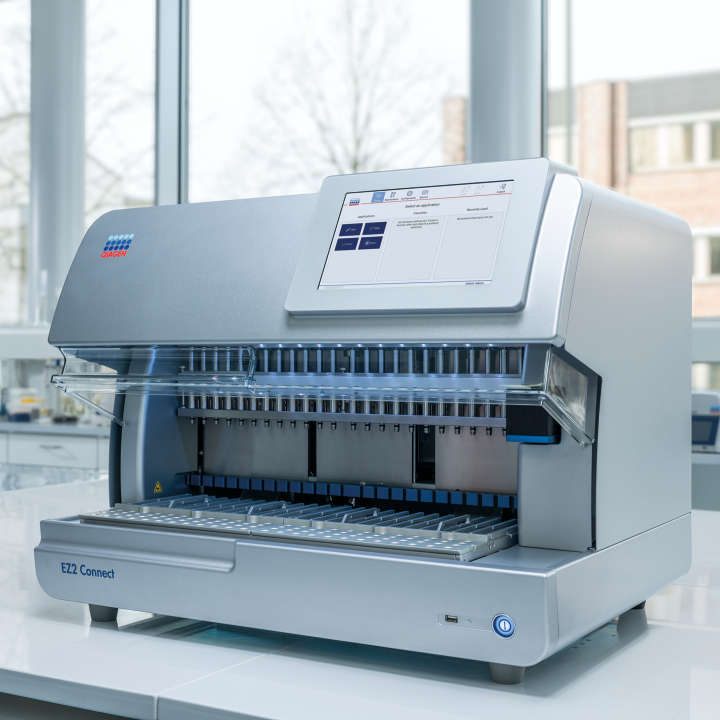
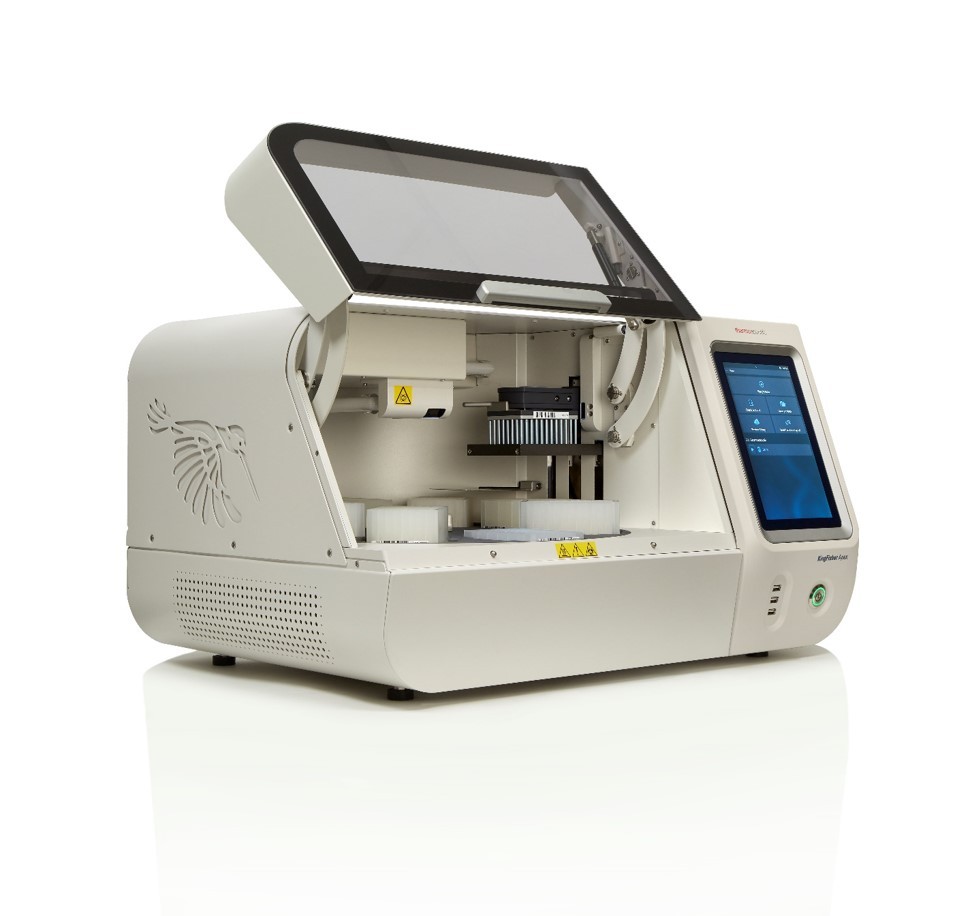


 咨询
咨询

